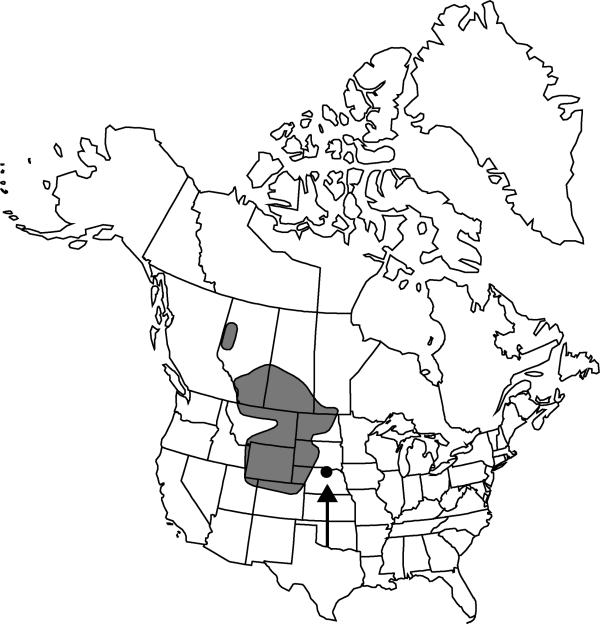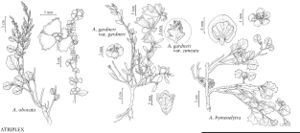Atriplex gardneri var. gardneri
Subshrubs, dioecious or sparingly monoecious, mostly 1–4 × 2–15 dm. Stems decumbent to ascending. Leaves persistent or subpersistent, opposite to subalternate proximally, alternate distally; petiole 4 mm; blade green, spatulate to oblanceolate or obovate, 12–55 × 5–12 mm, 2–5 times longer than wide. Staminate flowers dark-brown or yellow (especially in the northern Great Plains), in glomerules 2–4 mm thick, in terminal panicles 3–18 cm. Pistillate flowers in rather leafy unbranched spikes or panicles 10–25 cm. Fruiting bracteoles sessile or stipe 2–5 mm, body globose to flattened, 3–6 × 2–4 (–5) mm, terminal tooth to 1.5 mm, subtended with 2–4 (–7) lateral teeth, surface densely, shortly tuberculate to smooth and free of tubercles. Seeds 1.5–2 mm wide. 2n = 18, 36.
Phenology: Flowering spring–fall.
Habitat: Greasewood and sagebrush-saltbush communities, mainly on fine-textured saline substrates
Elevation: 1400-2300 m
Distribution

Alta., Man., Sask., Colo., Idaho, Mont., Nebr., N.Dak., S.Dak., Utah, Wyo.
Discussion
Selected References
None.
Lower Taxa
"dm" is not declared as a valid unit of measurement for this property.
